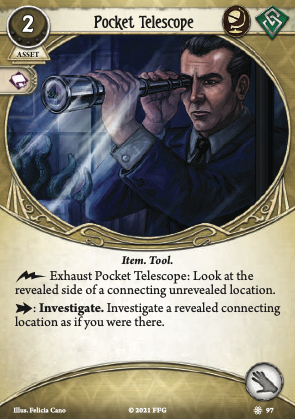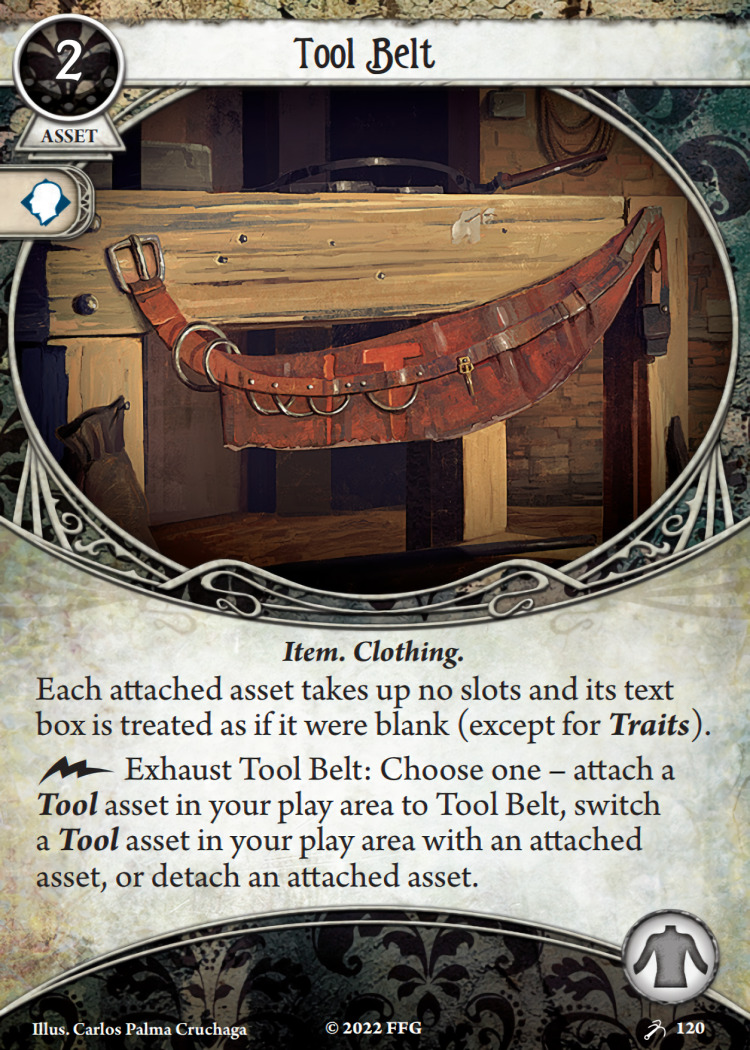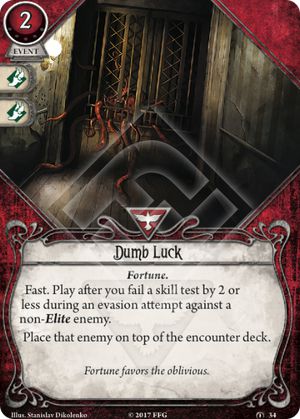
Let's revisit some old cards with years old reviews, for the benefit of new players.
A very common opening in Arkham Horror is play a three cost asset, gain a resource, then play a second 3 cost asset. It feels like an efficient use of the only turn you get without an encounter card draw, but most players can tell you that an action is worth more than a resource, and the only reason that such a turn feels deceptively valuable is that you have "setup" in time for the first mythos phase. More efficient would be play, Emergency Cache, play, but that is asking a lot of the random draw of your opening hand.
That is not to forget that turn 2 exists, and you quickly feel the squeeze of 1 resource at turn start where once you had 5. Your hand will have fewer cards than when you started too, and the demands of the encounter deck and the doom timer start to manifest. Many new players I've played with start drawing cards for answers to their lack of options, and once they have then, starting clicking for resources so that they can afford them. You may scoff at their lack of action, but pressing on without your key assets or defenses is it's own folly, making you ripe for action loss through failed actions, or prey for asset hate from treacheries or action hate from enemies.
Dario El-Amin is here to save you from yourself. Forget about his first printed sentence; it is a pie-in-the-sky demand (which makes it a crime that it is not the second sentence). Focus on the second line, and think about turn 1 and 2 with Dario in your hand; play Dario El-Amin, exhaust him to bring your resource pool back to 3 resources, then play a 3-cost asset. Next turn (enemies willing), exhaust again as your first action, play another 3-cost asset, then start working on the act with your final action. Repeat any turn you draw an expensive asset after ending last turn with 0 resources.
The exhaust is a feature, not a limitation. 2 resource actions in a turn is excessive, and Dario is here to gently remind you of that fact. Why spend 2 actions gaining resources when pacing yourself to once per turn nets you that most efficient use of your time? And once you start pacing yourself, you realise that your hand and resource pool are constantly replenishing, so you really should get a move on and let your options come to you.
I focus so much on the opening turns because Dario falls off in usefulness the later he shows up. This fact makes him a 'hard mulligan target' (Def - a card which if not in your opening hand, you mulligan your entire hand to maximise your odds of finding him, regardless of the cards you are giving away). He is universally useful, as all but the leanest decks need economy, and he bankrolls your strategy regardless of whether it is fighting/investigating/evading/supporting, or whether it is asset/event heavy. 0 exp means he is universally splashable too, and should always be a consideration if your investigator has access to rogue cards.
But falling off in usefulness doesn't mean completely useless. He actually has a use for excess resources, and while you shouldn't bend over backwards to activate his first clause as his design might suggest, he does ease another mistake new players make quite often; too much economy. I would say that any role, even fighter, will make good use of an early Dario, but there is no shortage of focused rogue investigators in recent expansions to take advantage of that additional , and extra is always appreciated.
In conclusion, there may be better allies, but you won't regret drawing Dario El-Amin in most cases, and he teaches restraint, which in a hard game with little room for error, is a benefit not written anywhere.



